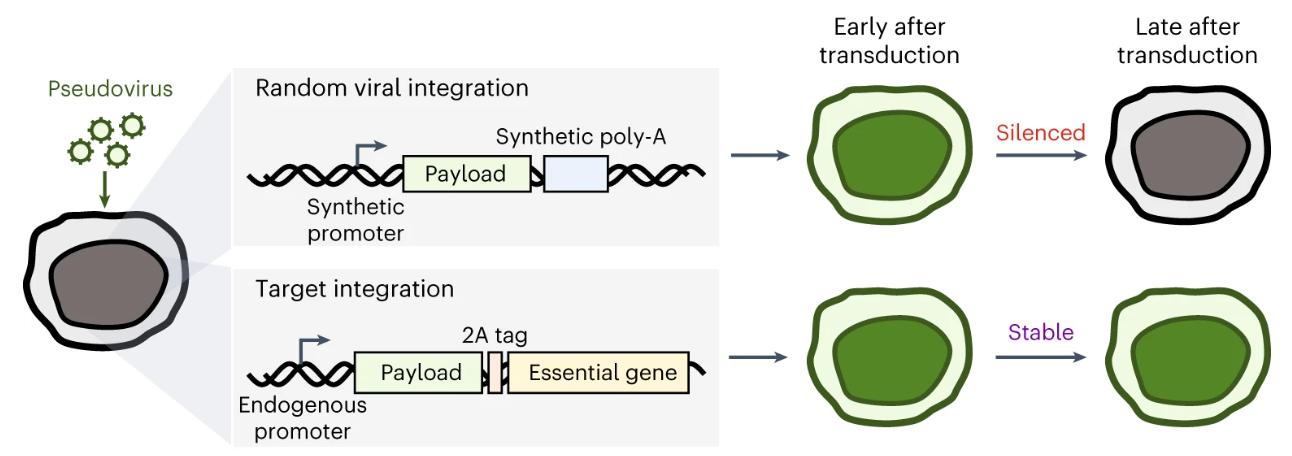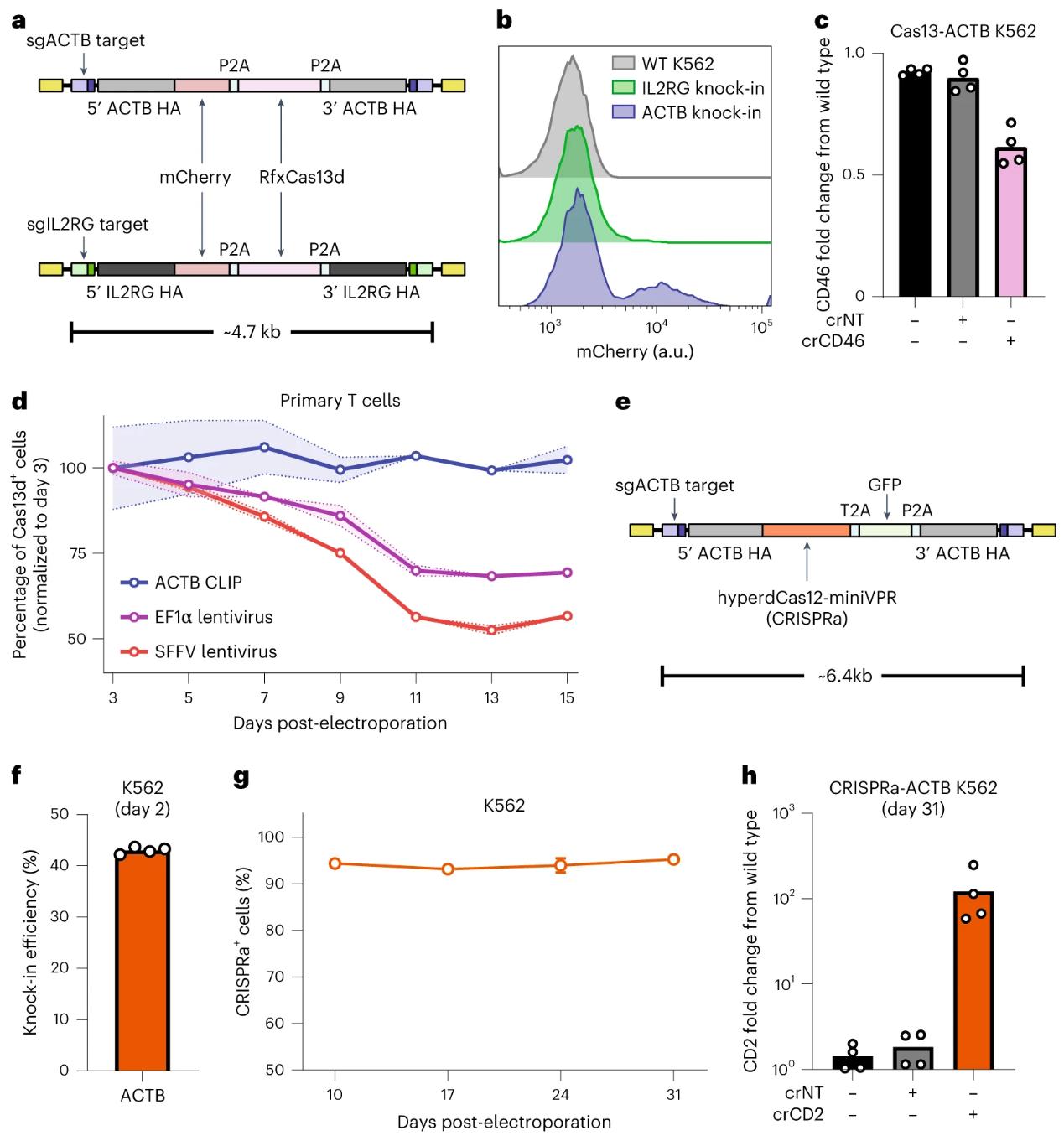In order to maximize the therapeutic potential and improve the efficacy and safety of engineered cells, it is often necessary to express large fragments of genes or complex gene circuits in cells. For example, when constructing CAR-T cells, the ability of T cells to kill cancer cells can be improved by introducing chimeric antigen receptor (CAR) genes into T cells. CRISPR activation (CRISPRa), CRISPR interference (CRISPRi), and logic gates can further enhance the efficacy of CAR-T cell therapy, but its long-term expression in primary cells remains a major challenge.
Transgene silencing is a major hurdle in using these tools for complex cell engineering and therapy. This phenomenon refers to the reduction or even complete loss of expression of genes integrated in primary cells using lentiviral or retroviral vectors over time. This phenomenon is often overlooked during tool development.
Recently, Lei S. Qi's team at Stanford University published a research paper entitled: Stable expression of large transgenes via the knock-in of an integrase-deficient lentivirus in the journal Nature Biomedical Engineering. This study developed a method for knocking in and stably expressing large fragments of DNA and simultaneously knocking in two genes at two endogenous sites - CLIP (CRISPR for long-fragment integration via pseudovirus). Using integrase-deficient lentivirus and Cas9-RNP, a large fragment of DNA (6kb) and two difficult-to-express viral antigens can be efficiently inserted and stably expressed in primary T cells with low cytotoxicity. CLIP provides a scalable and efficient new method for fabricating engineered primary cells.

Figure 1. Schematic design of CLIP.
The use of lentiviral vectors will semi-randomly integrate the carried DNA fragments into the genome, which can easily lead to transgene silencing. However, CLIP can achieve stable expression through HDR-mediated knock-in of large fragments of DNA into essential gene loci. Specifically, the method utilizes an integrase-deficient lentivirus (IDLV) to encode a payload (large fragment of DNA) flanked by a homology arm and a "cleavage site" that inserts the payload upstream of an endogenous essential gene and in frame, and then deliver the CRISPR-Cas9 ribonucleoprotein complex (Cas9-RNP) by electroporation. Integrase-deficient lentiviruses (IDLV) have a D64V mutation in the integrase that maintains the ability of the enzyme to package and nuclear-localize the viral genome but significantly reduces its ability to integrate randomly into the genome. The Cas9-RNP introduced by electroporation produces a targeted DNA double-strand break in the host cell, thereby performing homology-directed repair (HDR) at this site, and realizing the directional knock-in of the payload (large fragment DNA).
CLIP has several advantages over other described HDR techniques. For example, while AAV-based HDR donors have been described in a variety of cell types, AAV payloads are limited in size and are generally not amenable to large payload knock-in or double knock-in from a single donor. While a non-viral approach could theoretically deliver a larger payload than AAV, it still yielded extremely low viability in primary T cells. In contrast to these methods, CLIP balances the need to knock in large or multiple payloads while limiting cytotoxicity and shows robust efficiency at multiple sites.
Figure 2. CLIP enables knock-in of large CRISPR-Cas payloads for the stable expression in K562 and primary T cells.
In order to verify the effect of CLIP technology, the research team used CLIP technology to successfully knock in several proteins that were difficult to express before, including the S protein of the new coronavirus, Cas13, dCas12a, etc., into primary T cells, and can maintain long-term expression. This aids in vaccine and antibody research, and in the development of better cell therapies.
In general, the CLIP technology developed by the researchers can efficiently insert and stably express large fragments of DNA (up to 6kb) in primary T cells with low cytotoxicity, which provides a new strategy for easy silencing of transgene expression. It also provides a scalable and efficient new approach for developing engineered primary cell therapies.
Reference
Chavez M, et al. Stable expression of large transgenes via the knock-in of an integrase-deficient lentivirus. Nature Biomedical Engineering, 2023: 1-11.


